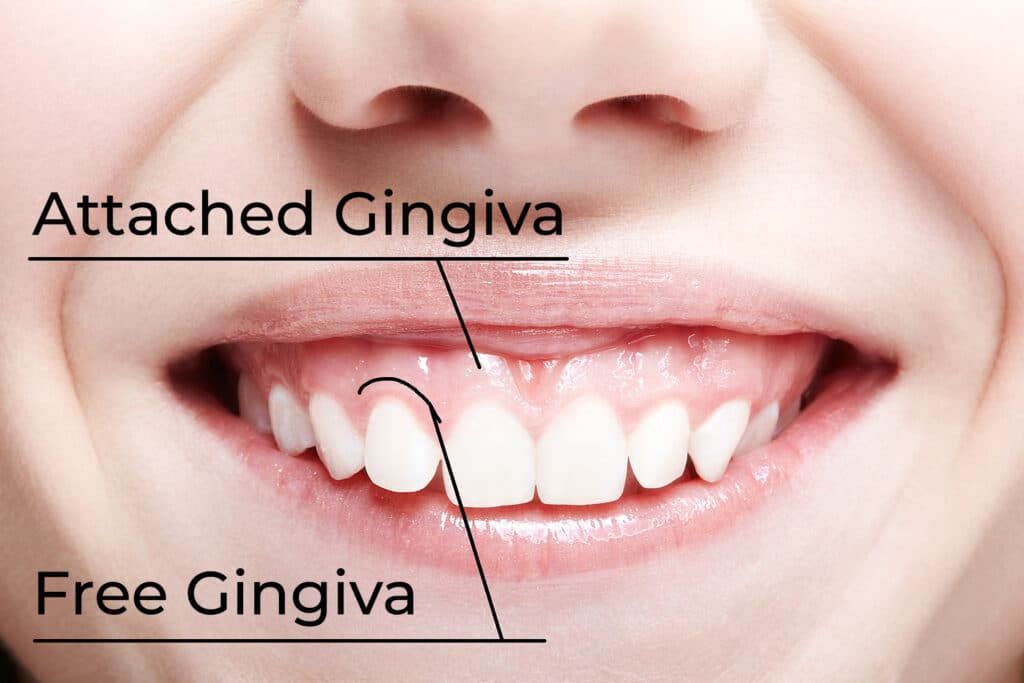What is a Periodontal Gum Pocket?
Have you ever heard your dentist and dental hygienist talking about your ‘pockets’ and not sure what they mean? Well, they are talking about a measurement that helps them to detect periodontal (gum) disease.
Periodontal disease is an infection within your gum tissue, supporting ligaments, and jawbone. This infection is caused by harmful bacteria that is present in plaque, a soft and sticky substance on our teeth that forms daily. Without professional care, this disease can worsen and cause gum and bone loss that can lead not only to tooth loss but can also affect your overall health.
This oral disease has become a significant public health issue because it affects 50% of the American adult population. Not only is periodontal disease a danger to oral health, it is also a danger to overall health.
Your dental professionals are here to monitor your gum health, which starts with measurements of the space between your tooth a gum. That space is called a periodontal pocket.
WHY ARE GUM POCKETS MEASURED?
Gums are soft tissues that cover the jawbone that holds your teeth. Healthy gums for a seal against your teeth to keep them protected. Without a healthy seal, your teeth and gums are vulnerable to disease.
Gums, also referred to as gingiva, are in your mouth in two forms, attached or free:
- Attached Gingiva – Is thick gum tissue that is attached firmly to the bone.
- Free Gingiva – Is the gum tissue that surrounds your tooth like a turtleneck because it hugs your tooth but is not attached.

That space where the free gingiva forms a collar around the tooth is what your dental professionals call the periodontal pocket. Typically, the free space between tooth and gum is small in a health mouth, 1-3mm in depth.
At your dental appointments, your dentist and dental hygienist measure that space with a measuring tool called a periodontal probe. Each tooth is measured in six areas and those measurements are recorded and monitored at each visit. Those measurements tell your dentist how much attached gingival you have and how healthy it is.
If those measurements are beyond the 3mm measurement, your dentist may talk to you about signs of periodontal disease. While measuring, your dental professionals will also be looking for signs of gum disease such as bleeding while measuring. Bleeding gums is a sign of active oral bacteria.
WHAT DO DEEPER POCKETS MEAN?
Although your gums may feel fine, the depth of the pocket can indicate that you have some stage of periodontal disease. The deeper the pocket measurement, the more attached gum tissue has been lost, which may also mean that jawbone has also deteriorated.
Generally, pockets in the 4mm range tell your dental professionals that you may have a gingivitis that must be either monitored or treated. If caught early, pockets can be maintained or even reduced by periodontal maintenance such as more frequent cleanings and increase oral homecare.
If pocket measurements are deeper, it could indicate a more severe and destructive gum infection called periodontitis. If untreated, periodontitis can become a serious infection that can negatively affect your overall health! Treatment of periodontitis requires advanced treatment with a periodontist.
WHY DO POCKETS DEEPEN?
Bacteria invade a normally healthy gum pocket and causes an inflammatory response from your body. That response is inflammation or puffiness, which causes the free gingiva that is usually snug around the tooth to swell. Swollen or puffy gums are very inviting to harmful bacteria, which attack the tissue and supporting structure like ligaments and bone.
As bacteria attack your gum pockets, tissues deteriorate, and pockets deepen.
CAN DEEP POCKETS REPAIR?
Depending on the level of disease, deep periodontal pockets will not repair themselves but can be reduced with special treatment. Reducing the pockets to a healthier depth requires a combination of periodontal treatment and increased oral homecare.
If you follow the treatment that is recommended by your dentist or periodontist, you may see significant improvement of your gum tissue. As the gums become healthier, they become snug against your teeth again, thus reducing the pocket and repelling debris.
But keep in mind that maintaining a healthy pocket takes more attention to how you care for your oral health because bacteria that causes periodontal pockets is present in our mouths daily.
HOW CAN POCKETS BE REPAIRED?
Reducing periodontal pockets is a team effort between you and your dental professionals.
After careful periodontal examination, your dentist will design a treatment plan for your periodontal disease which may include:
- Periodontal Treatment: Treatment may vary from more frequent cleanings to a non-surgical gum therapy called scaling and root planing.
- Periodontal Maintenance: After periodontal treatment, pockets can be maintained by more frequent cleanings that are usually alternated between your general dental office and your periodontal office. More frequent cleanings help to ensure that harmful bacteria do not have the ability to infect the pockets.
- Advanced Oral Homecare: Because harmful bacteria forms daily, you will be part of the team by thoroughly cleaning your teeth and gums. Following your dental professional’s recommendation, you may find yourself using more advanced homecare tools such as power toothbrushes, floss, interdental brushes, water flossers, and antimicrobial rinses.
Diagnosing and treating periodontal disease starts with periodontal pocket assessment. If it is detected in its earliest stages, you can eliminate unhealthy periodontal pockets and decrease the bacterial infection before it progresses to more severe infection that causes pain, tooth loss, and health risks.